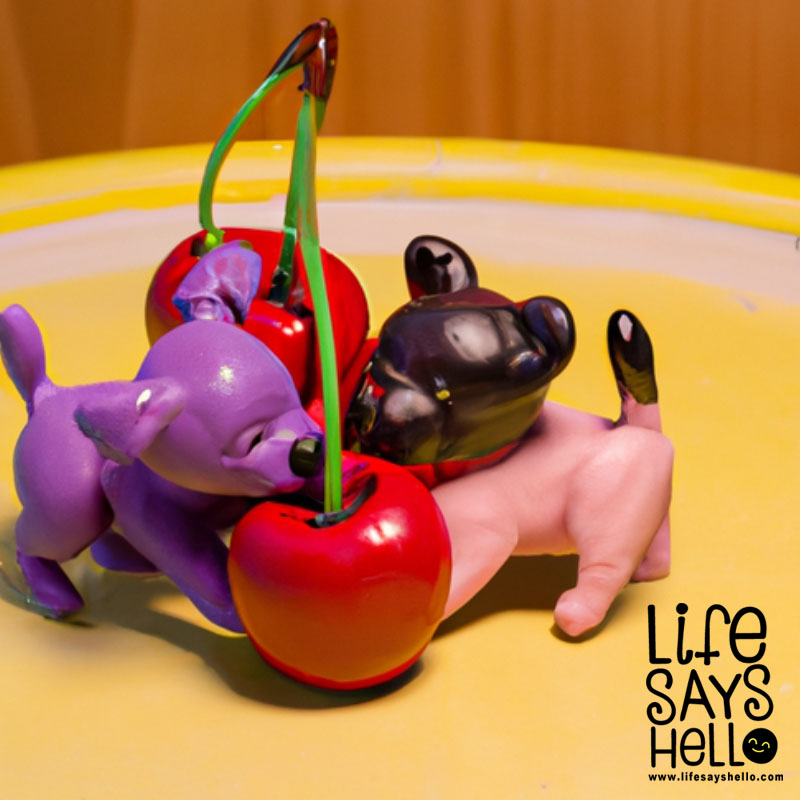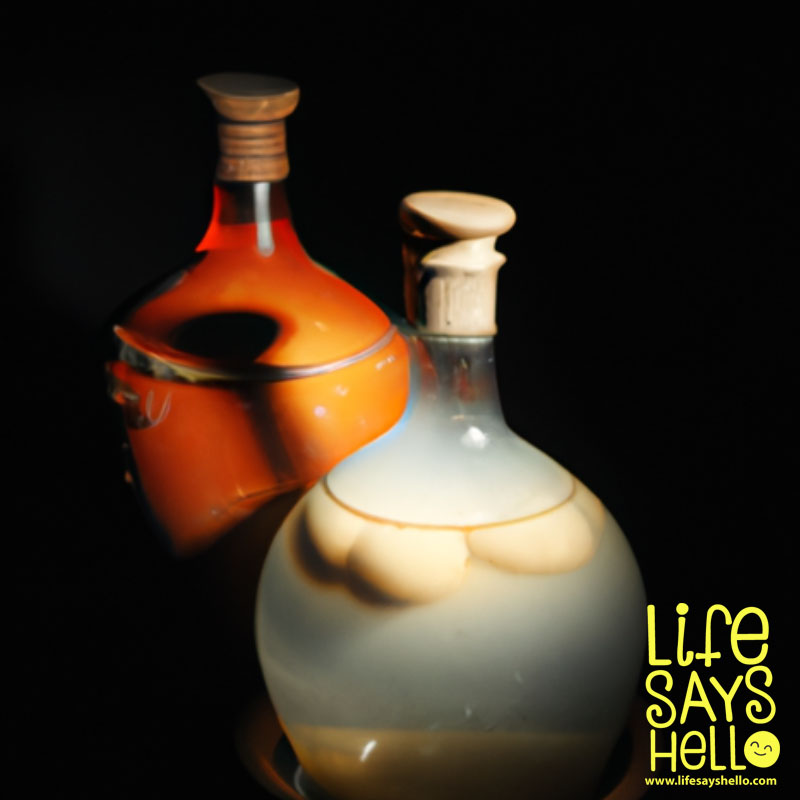Can Dogs Eat Cherries? The Dos and Don'ts of Feeding Cherries to Your Dog

Cherries are a delicious summer fruit that many dog owners want to share with their furry friends. But can dogs eat cherries safely? While cherries themselves are not toxic to dogs, some parts of the cherry plant contain compounds that can be dangerous. Read on to learn which parts of cherries are safe for dogs to eat, what amounts are appropriate, symptoms of cherry poisoning in dogs, and tips for feeding cherries to your pup safely.
Introduction: Are Cherries Good or Bad for Dogs?
During cherry season, it's natural to want to share a few of these sweet, juicy fruits with your dog. Cherries contain beneficial nutrients like vitamins A and C, fiber, and antioxidants. However, the flesh is the only part of the cherry that is safe for dogs. The pit, stem, and leaves of cherries contain cyanide, which is toxic to dogs if consumed.
So can dogs eat cherries? Yes, dogs can eat cherries, but only the flesh and in moderation. The flesh provides vitamins, minerals, and fiber. But the pits, stems, leaves, and any mold or wilting parts can make your dog sick. By understanding which parts to avoid, what symptoms to look for, and how to introduce cherries safely, you can allow your dog to enjoy cherries as an occasional treat.
Can Dogs Eat Cherry Flesh?
The flesh or pulp of cherries has a sweet, tart flavor that many dogs enjoy. The flesh contains beneficial nutrients, making it a healthy snack in moderation.
Some key things to know about feeding the flesh of cherries to dogs:
Cherry flesh is safe for dogs to eat. The pulp or inside flesh of a cherry does not contain toxic compounds.
Feed in moderation. Cherries should make up no more than 10% of your dog's total daily calories. Too many can cause digestive upset.
Wash thoroughly. Make sure to rinse cherries to remove any pesticide residues.
Remove the pit first. Be sure to de-pit cherries before feeding to avoid a choking hazard.
Introduce slowly. When first introducing cherries, feed just a few small pieces at a time to watch for any allergic reaction.
As long as you remove the pit first and moderate portions, the flesh of fresh, ripe cherries makes a nutritious snack for dogs.
Parts of Cherries That Are Unsafe for Dogs
While the flesh of cherries is safe, other parts of the cherry fruit and plant contain cyanide and should not be fed to dogs:
Pits and Seeds
The pit or seed contains amygdalin, which releases cyanide when ingested. Cherry pit poisoning can cause dilated pupils, difficulty breathing, red gums, seizures, and even death in severe cases.
Never feed your dog cherries with the pits still inside, as they pose a serious choking and poisoning hazard. Be sure to remove all traces of the pit and seed before feeding cherries to dogs.
Stems
The stems or leaves of cherry plants also contain cyanide compounds. Dogs should not be allowed to chew on or ingest cherry stems or leaves.
Leaves
Cherry leaves are another part of the plant that contains toxic cyanide. Never feed dogs cherry leaves or allow them to chew on or ingest any part of the leaves or stems.
Wilting or Moldy Cherries
Cherries that are overripe, wilted, or moldy can also pose a risk. Moldy cherries may contain mycotoxins that cause neurological issues. Wilting cherries have a higher concentration of cyanide. Only feed your dog fresh, ripe cherries that have no signs of mold or wilting.
By understanding which parts of the cherry fruit and plant are toxic, you can safely feed your dog the flesh while avoiding the dangerous parts. Monitor your dog when feeding cherries and do not allow access to pits, stems, leaves, or rotten cherries.
Symptoms of Cherry Poisoning in Dogs
If your dog eats cherry pits, stems, or leaves, be on the lookout for these symptoms of cherry poisoning:
Labored breathing - Cyanide prevents cells from absorbing oxygen, resulting in difficulty breathing.
Bright red gums - Cyanide poisoning causes bright red discoloration of the gums and mouth.
Dilated pupils - Cherry pit poisoning often causes pupils to become dilated and slow to react.
Drooling - Excessive drooling or frothing at the mouth may be an early sign of irritation.
Vomiting/diarrhea - Some dogs vomit or have diarrhea after ingesting cherry pits or leaves.
Lethargy - Lack of energy, weakness, or collapse can occur with cyanide poisoning.
Seizures - In severe cases, cherry pit poisoning can cause seizures and tremors.
If your dog eats any part of the cherry plant besides the flesh, monitor them closely for these symptoms for at least 72 hours. Seek emergency vet care if you notice any concerning signs of cherry poisoning. Prompt treatment is essential for the best chance of recovery.
Tips for Safely Feeding Cherries to Dogs
Here are some tips to safely allow your dog to enjoy cherries as an occasional treat:
Remove pits, stems, leaves - Be sure to thoroughly remove all traces of the pit, stem, leaves, or branches before feeding cherries to dogs. Even small amounts can be dangerous.
Wash thoroughly - Rinse cherries under running water and gently rub to remove any pesticide residue. Pat dry before feeding.
Cut into small pieces - Cut cherries into quarter or smaller slices to reduce choking risk.
Monitor for symptoms - Watch for any signs of vomiting, diarrhea, dilated pupils, trouble breathing, or lethargy after feeding cherries.
Contact your vet - If your dog shows any concerning symptoms after eating cherries, call your vet right away for advice. Prompt treatment maximizes the chances of recovery from poisoning.
Avoid maraschino cherries - The high sugar content of maraschino cherries makes them a poor choice for dogs. Stick to fresh, raw cherries.
Introduce slowly - When first giving cherries, only feed 1-2 small pieces at a time and watch for reactions.
Avoid moldy/wilted cherries - Only feed fresh, ripe cherries. Discard any that are overripe, moldy, or wilted, as these have higher toxin levels.
Supervise your dog - Do not leave dogs unsupervised with access to cherries to prevent choking or overconsumption.
Limit portion size - Cherries should comprise no more than 10% of your dog's daily caloric intake. Too many can lead to GI upset.
Skip cherries with dogs that are prone to intestinal blockages - The flesh can still pose a risk for dogs prone to getting obstructions in their digestive tract.
By taking some basic precautions, most healthy dogs can enjoy fresh, ripe cherries in moderation. But always exercise caution when introducing any new food.
Conclusion: Cherries Can Be a Safe Treat in Moderation
In summary, the flesh of cherries makes for a tasty and nutritious snack for dogs - but only when properly prepared and fed in moderation. By understanding what parts to avoid, what symptoms could indicate poisoning, and how to introduce cherries safely, dog owners can allow their pets to enjoy this seasonal summer fruit.
Just be sure to remove all pits, stems, leaves, and inedible parts before feeding cherries to dogs. And as with any new food, start slowly and watch for any reactions. With some care and precaution, fresh cherries can be a fun seasonal treat for your pup!




Comments